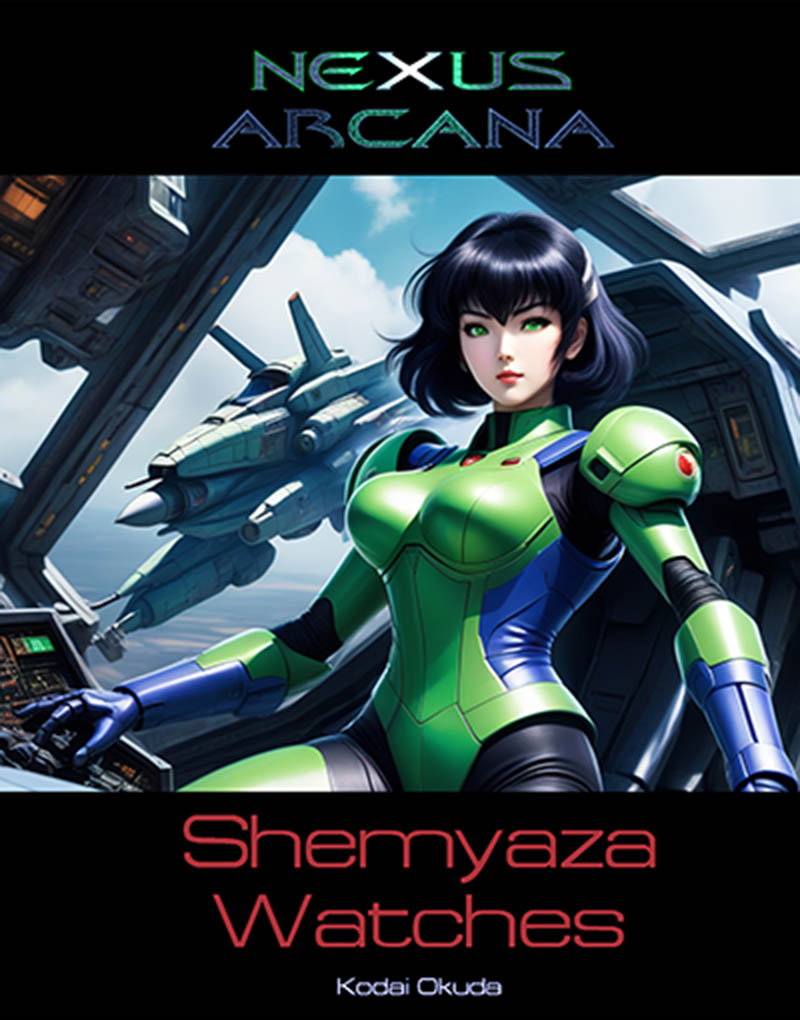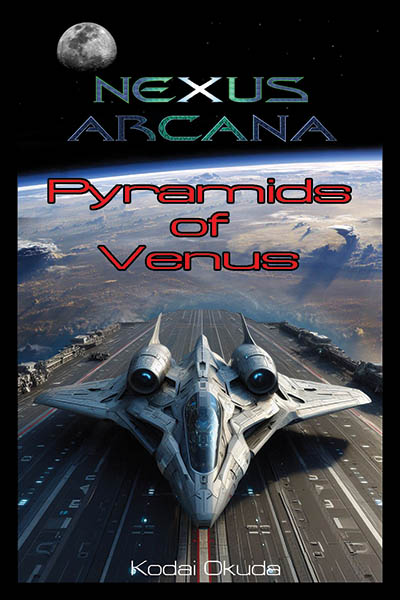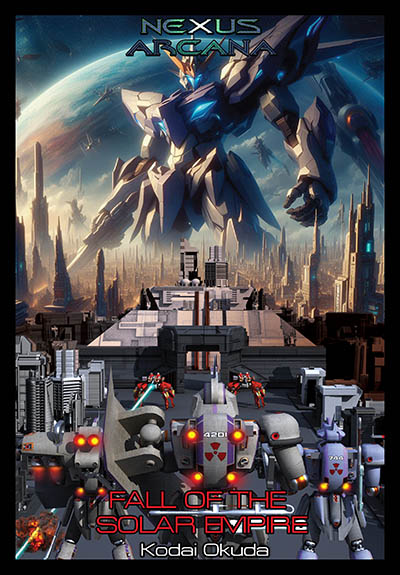Jhararo's All the Galaxy's Warships Volume 3: 1st Interplanetary War Mecha concepts
by , 03-20-2012 at 06:38 AM (173265 Views)
Welcome to the March issue of Jhararo's All the Galaxy's Warships, the digital database dedicated to the study of mechanical devices, weapons, vehicles, and other machines of the known galactic nations.
This Month's Issue: MECHA (Battlerobot & Tank) design concepts of the 1st Interplanetary War era.
* * *
Great War Era designs
The technological road that led to the machines of the 1st Interplanetary War was made by the mechanized units of the Great War Era. The warmachines that fought in the battles of the 2050s were a culmination of nearly twenty years of world wars and conflicts that saw mobile armor--such as tanks, MATS, and exosuits--go from conventional weapons systems to full fledged humanoid walking combat robots.
THE TYPE-35 "DESERT FOX"
The first major change in armor design concepts started in 2035 with the introduction of the UN Type-35 "Desert Fox" Main Battle Tank.
The Type-35 incorporated the primary design features that would be added into nearly every other major mechanized combat unit built after it. First, the tank utilized both an automatic cannon and missile pod units for anti-armor, while also incorporating an anti-missile/personnel machine gun. Most tanks prior to the Type-35 used a combination of weapons similar to the Type-35, but few to none used both cannon and missile weaponry. Pre-World War IV tanks usually used one or the other, but not both. The second advancement was the use of multispectrum video sensor arrays added to each control station of the crew of the Type-35. These stations allowed the tank to gain a 360 degree view around the tank at all times via the control panels. While tanks prior to the Type-35 used video sensors, few used them to give the tank operators a digitally enhanced view of everything around the vehicle at the same time. The third major feature was the vehicle's nuclear turbine engine. All tanks prior to the Type-35 used either a hydrogen based engine or other non-nuclear based fuel. Lastly the Type-35 used a cerebral interface. This system was a primitive version of the Neural Link System (NLS) found on the Prodono Hai Richon Battlesuit, even though the Earth based system was developed in total independence from that of the alien unit.
This combination of systems led to the development of the next major leap in mobile armor designs, that being the USMC-EA-45 "Paladin" Exosuit.
THE USMC-EA-45 "PALADIN"
The USMC-EA-45 was originally intended to fight in the Asian Pacific conflict of the mid-2040s, but found itself being fielded on the worldwide theater of the Great War of the 2050s instead. This exo-suit was so heavily armed and armored compared to previous exo-suit designs that it was given the designation of an "exo-armor".
The "Paladin" had two major features that previous exo-suits lacked. The first was a nuclear power plant. All other previous exo-suit designs used hydrogen turbines and/or gas/petroleum based turbine engines. The second was an Ion-engine flight pack that gave the exo-armor the ability to fly both in an atmosphere and in space environments. The space feature was intended to aid the United States of North America's Space Navy force on the moon and other planetoids during the mid-Great War years.
The USMC-EA-45's combination of heavy armor (for an exo-suit), impressive weapons (plasma missiles and large-caliber Exo-Suit-Rifle), cerebral interface, and flight capability caused military planners to improve the performance of exiting mobile arthropod tank designs such as the widely used Australian MAT-35. The outcome of this improvement project would lead to the development of the MAT-48 series.
THE MAT-48 "General Patton II"
The MAT-48 "General Patton II" series of mobile arthropod tanks was not particularly remarkable except for the mechanics of its turret system. The "turntable" style of gear-driven swivel waist was the most noteworthy feature of this mecha as it allowed for a 360 degree swivel at a high rate of speed and was "friction free" due to the fibro-carbon molecular structure of the gears used. The leg joints of the MAT-48 series also used a "self-lubricating" system of carbon-graphite lubricant that could withstand the absolute zero temperature of space and the deep pressures of the ocean. This allowed the MAT-48 series to go into nearly any environment without fear of its joints seizing up or breaking down during operations.
The MAT-48 swivel system and joints were used in the construction of the most successful design of the 1st Interplanetary War, that being the MBR-01. However, we'll get to that in the next section. First we should discuss the last machine that had a major influence on mecha designs of the 1st Interplanetary War. That machine was the USSN-EA-59 "Jet Jaeger."
THE USSN-EA-59 "Jet Jaeger"
The "Jet Jaeger" was built after the defeat of the United States of North America in the late 2050s, the remnant of their space forces found themselves in a dire situation. The only real base of operations they possessed was the planetoid Juno, as Earth had been decimated by the planetoid impact of 2056 AD. The USSN-EA-59 was built in a last ditch effort to gain food and supplies for the United States Space Navy before they starved to death at the hands of the United Nations Solar Empire. This situation caused the creation of a machine that would become the basis for the SBR-01 series of battlerobots used during the 1st Interplanetary War era.
The USSN-EA-59 was the first mecha to use energy weapons and was also fitted with anti-shuttle missile pods. It used a high-maneuverability thruster/rocket engine system and was among the first mecha to use thermonuclear Rocket engines as its primary propulsion. This combination of weapon systems and maneuvering were unsurpassed during the 2060s and made the "Jet Jaeger" the premier exo-armor of its day. The maneuvering system, see-through plasti-steel canopy, thermonuclear Rockets, and general configuration of the "Jet Jaeger" were used in both the SBR-01 series and HBR-01 series of MBR-01 variants.
* * *
1st Interplanetary War designs
The mecha of the 1st Interplanetary War set the pace of all future Earth designs of the 21st Century and early 22nd Century. The most notable of the 1st Interplanetary War designs are the MBR-01 series, the Ceres Regency "Jaeger WeirMech", the BattleKnights of the USR, and the Protean fighters of the JDF.
MacDonald-Doogrim MBR-01 "Liberator"
The Sherman tank of the 21st Century is the best way to describe this backbone unit of the Earth Federal Forces. Introduced as a search and rescue unit in the early 2060s, the "Liberator" underwent a major change in 2064 AD. The original limited-production run of MBR-01s were called the Military Rescue Unit Type-62 or MRU-62. These units were lighted armed with a dual 20 millimeter forearm mounted cannon gunpod on the left arm, an advanced sensor array on the left shoulder, a Rocket Propelled Plasma Grenade launcher on the right forearm, and a hydraulic shovel with bucket on the right shoulder. The armor of the MRU-01 was very thin compared to the MBR-01.
After a major encounter with remaining UNSC clone trooper forces at the Battle of Paris in 2063, the MRU-01 was given a full make over and became the MBR-01 in 2064. The MBR-01 incorporated all the systems used on the other major pieces of military armor prior to it; with missile launchers, automatic cannons, nuclear power, multispectrum sensors, a "frictionless" swivel waist, self-lubricating joints, and thermonuclear rocket engines. The MBR-01 led to nearly 22 variants over three wars at the later half of the 21st Century, including the Heavy Battlerobot series and Space Battlerobot series that spawned from the MBR-01. It was perhaps the most successful mecha design of the 21st Century.
Ceres Regency Jäger-WeirMech JgWM-02
Really the only noteworthy features of the Jäger-WeirMech is its ergonomic design. It was the most humanoid machine built during the late 2060s, and was the primary inspiration for the BattleKnight design developed a few years later in 2072 by the Solar Empire.
The JgWm-02 was built off of the MBR-01 design blueprints smuggled to Vesta by the conspirators that were part of the USSN. However, the Jäger-WeirMech was largely a throwback to the old USMC-EA-45 and USSN-EA-59 exo-armors since it used hydraulic muscles instead of the more advanced fibro-carbon type. Its weapons were formidable and its missile compliment led to the development of improved MBR-01 variants by the EFR to compensate for the Ceres machine, but the Jäger-WeirMech was obsolete before it ever saw action in the 1st Interplanetary war. It's major contribution to the development of Earth based mecha design was its manlike body style and especially its sensor-head.
USR BattleKnight Series
Developed totally independent of the MBR-01 series in 2072, but partially from the same lineage, the BattleKnight series of exo-armors built by the Union of Solar Republics was the second major development of the 1st Interplanetary War period. While production of this unit did not commence until 2075, the BattleKnight series had been in prototype form from as early as 2071 after Lady Isabeau Furrier commissioned the secret project to develop a machine similar in size to that of a "Jet Jaeger" but with the firepower and armor of a MBR-01. The result was the BattleKnight.
The BattleKnight incorporated the same cerebral interface system as that of the USMC-EA-45 and was essentially an updated version of that exact unit (a captured "Paladin's" unit was used to design the one in the BattleKnight). These mecha gave birth to a whole family of low-tonnage pseudo-battlerobots that were more akin to battlesuits than they were either exo-armors or battlerobots. The BattleKnight design of 2072 was used to create the pinnacle of mecha designs built during the 1st Interplanetary War. The zenith of technological development was the Protean fighter.
Gargarin Research & Development VSF-04X (Prototype), Macrotechnologies PS-01 (JDF production model), Titan-Technologies PS-01A "Archangel" (Saturn Defense Forces production model)
In the wake of the largest defeat of troopship transports during the 1st Interplanetary War at the planetoid Pallas, the USSN/Solar Empire conspirators colluded to build the ultimate in mechanized mobile armor. A family of spacefighters capable of leaving a ship in space, flying down towards a planet, and then transforming into the battlerobots required to blast a landing zone for heavier battlerobots or conduct the entire operation itself. Such a machine was created in the form of the VSF-04Xbuilt by Gargarin R&D in 2073 AD. After all known models, their blueprints, and dies for construction were captured by Earth Federal Space Marine forces, this mecha was given a new designation and classified top secret by the EFSM high command. The new name of the fighter was "Protean" and the machine underwent an evolution that would eventually create the first mass produced version of the mecha, the PS-01A "Archangel."
Every conceivable positive attribute of battlerobot design learned from the Great War, 2060s, early 2070s, and alien technologies was put into the design, development, and ultimate creation of the Protean fighters. The machine has space fighter engines to be used for fast, high-speed maneuvering and quick approach to a planet. It had re-entry capability to pass through an atmosphere unscathed. It had all of the features of the MBR-01: a nuclear reactor, fibro-carbon muscles, missile and automatic cannon, frictionless joints, and thick armor. The Protean fighter used a sensor head like the Ceres JgWm-02 and BattleKnights. It also used chaffe launchers like the USR BattleKnights and was very ergonomic in robot mode. The Protean fighter used Ion engines (at first) like the USMC-EA-45, and had energy weapons like the USSN-EA-59. It was everything every other mecha before it was, and much more. The PS-01A used Varna technologies (one of the alien races at war with the Prodono) and was a formidable space fighter in its own right. The PS-01A sired a whole new species of battlerobot that would eventually replace of non-transformable types by the 23rd century. However, even this extremely impressive 21st century machine paled in comparison to the Prodono weapon system is was intended to fight (PS-01A version).
The Hai Richon battlesuit.
THE PRODONO HAI RICHON BATTLESUIT
Used in extremely limited numbers by Ceres Regency special forces at the very tail end of the 1st Interplanetary War, the Hai Richon was originally built by the Prodono sometime around 298,530 BC. It was the culmination of thousands of centuries of space warfare and galactic military campaigns. Cheap, easy to maintain, and dreadfully powerful, this standard issue combat unit of the aliens was more than a match for nearly every kind of Earth built mecha save the Protean fighters.

The Hai Richon bears mentioning because it would lead to the next generation of battlerobots, BattleKnights, and Protean fighters of the Ceres Conflict during the 2080s and subsequent wars during the late 2090s and early 2100s. The Hai Richon became the rule by which all Earth mecha were measured and it was in mankind's best interests to do so. During the 21st century the prevailing theory was that should the men of Earth ever encounter an alien race as formidable as the Prodono once were, they would be ready.
















 Email Blog Entry
Email Blog Entry

